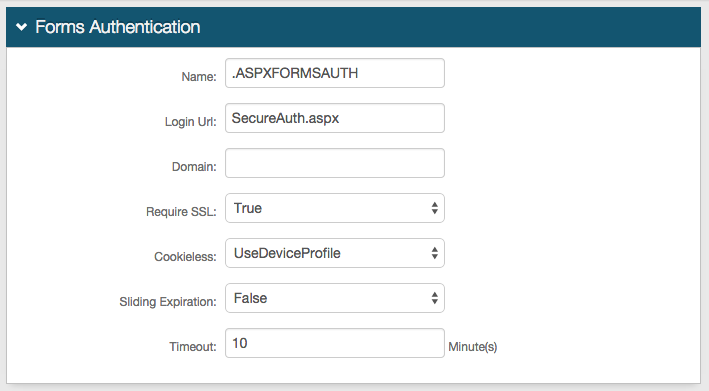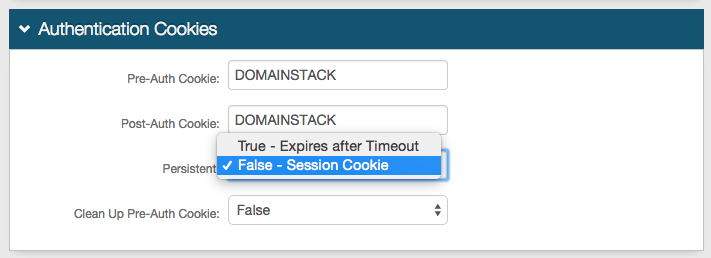Thycotic Secret Server (SP-initiated) Integration Guide
Introduction
Use this guide to enable Multi-Factor Authentication and Single Sign-on access via SAML to Thycotic Secret Server.
Prerequisites
1. Have a Thycotic Secret Server Admin Account
2. Configure Thycotic Secret Server to use HTTPS
3. Create a New Realm for the Secret Server integration in the SecureAuth IdP Web Admin
4. Configure the following tabs in the Web Admin before configuring the Post Authentication tab:
Overview – the description of the realm and SMTP connections must be defined
Data – an enterprise directory must be integrated with SecureAuth IdP
Workflow – the way in which users will access this application must be defined
Multi-Factor Methods – the Multi-Factor Authentication methods that will be used to access this page (if any) must be defined
SecureAuth IdP Configuration Steps
Data
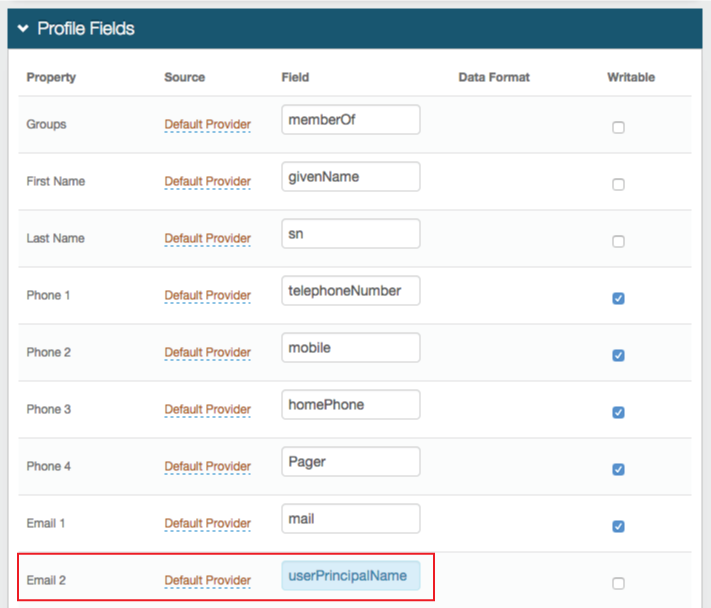 |
1. In the Profile Fields section, map the userPrincipalName to a SecureAuth IdP Property
For example, add the userPrincipalName to the Email 2 Property if it is not already contained somewhere else
Warning
Click Save once the configurations have been completed and before leaving the Data page to avoid losing changes
Post Authentication
 |
2. Select SAML 2.0 (SP Initiated) Assertion Page from the Authenticated User Redirect dropdown in the Post Authentication tab in the Web Admin
3. An unalterable URL will be auto-populated in the Redirect To field, which will append to the domain name and realm number in the address bar (Authorized/SAML20SPInit.aspx)
4. A customized post authentication page can be uploaded, but it is not required
User ID Mapping
 |
5. Select the SecureAuth IdP Property that corresponds to the directory field that contains the userPrincipalName (Email 2)
6. Select urn:oasis:names:tc:SAML:1.1:nameid-format:unspecified from the Name ID Format dropdown (default)
Select a different option if Secret Server requires it, which the Service Provider (SP) will provide
7. Select False from the Encode to Base64 dropdown
SAML Assertion / WS Federation
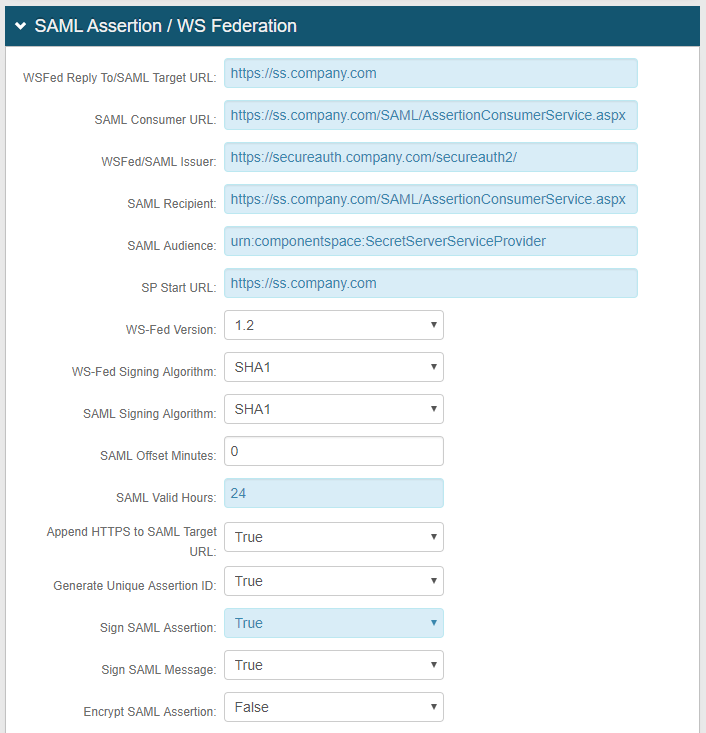 |
8. Set the WSFed Reply To/SAML Target URL to Fully Qualified Domain Name (FQDN) of Secret Server, e.g. https://ss.company.com
9. Set the SAML Consumer URL to the FQDN of Secret Server, followed by /SAML/AssertionConsumerService.aspx, e.g. https://ss.company.com/SAML/AssertionConsumerService.aspx
10. Set the WSFed/SAML Issuer to the FQDN of the SecureAuth IdP appliance, followed by the SecureAuth IdP Secret Server-integrated realm, e.g. https://secureauth.company.com/secureauth2/
11. Set the SAML Recipient to the FQDN of Secret Server, followed by/SAML/AssertionConsumerService.aspx, e.g.https://ss.company.com/SAML/AssertionConsumerService.aspx
12. Set the SAML Audience to urn:componentspace:SecretServerServiceProvider
13. Provide the SP Start URL to enable SSO and to redirect users appropriately to access Secret Server
For example, the SP Start URL would be https://ss.company.com
14. Select True from the Sign SAML Assertion dropdown
15. Select True from the Sign SAML Message dropdown
16. Select False from the Encrypt SAML Assertion dropdown
 |
17. Leave the Signing Cert Serial Number as the default value, unless there is a third-party certificate being used for the SAML assertion
If using a third-party certificate, click Select Certificate and choose the appropriate certificate
18. Download the Assertion Signing Certificate to be used in the Secret Server Configuration Steps
19. Provide the Domain in order to Download the Metadata File to send to Secret Server (if required)
Warning
Click Save once the configurations have been completed and before leaving the Post Authentication page to avoid losing changes
Forms Auth / SSO Token
Optionally, in the Forms Auth / SSO Token section, click the View and Configure FormsAuth keys/SSO token link to configure the token/cookie settings and configure this realm for SSO.
 |
Secret Server Configuration Steps
 |
1. Log into the Secret Server Admin Console, and select Configuration from the ADMIN options
Configuration
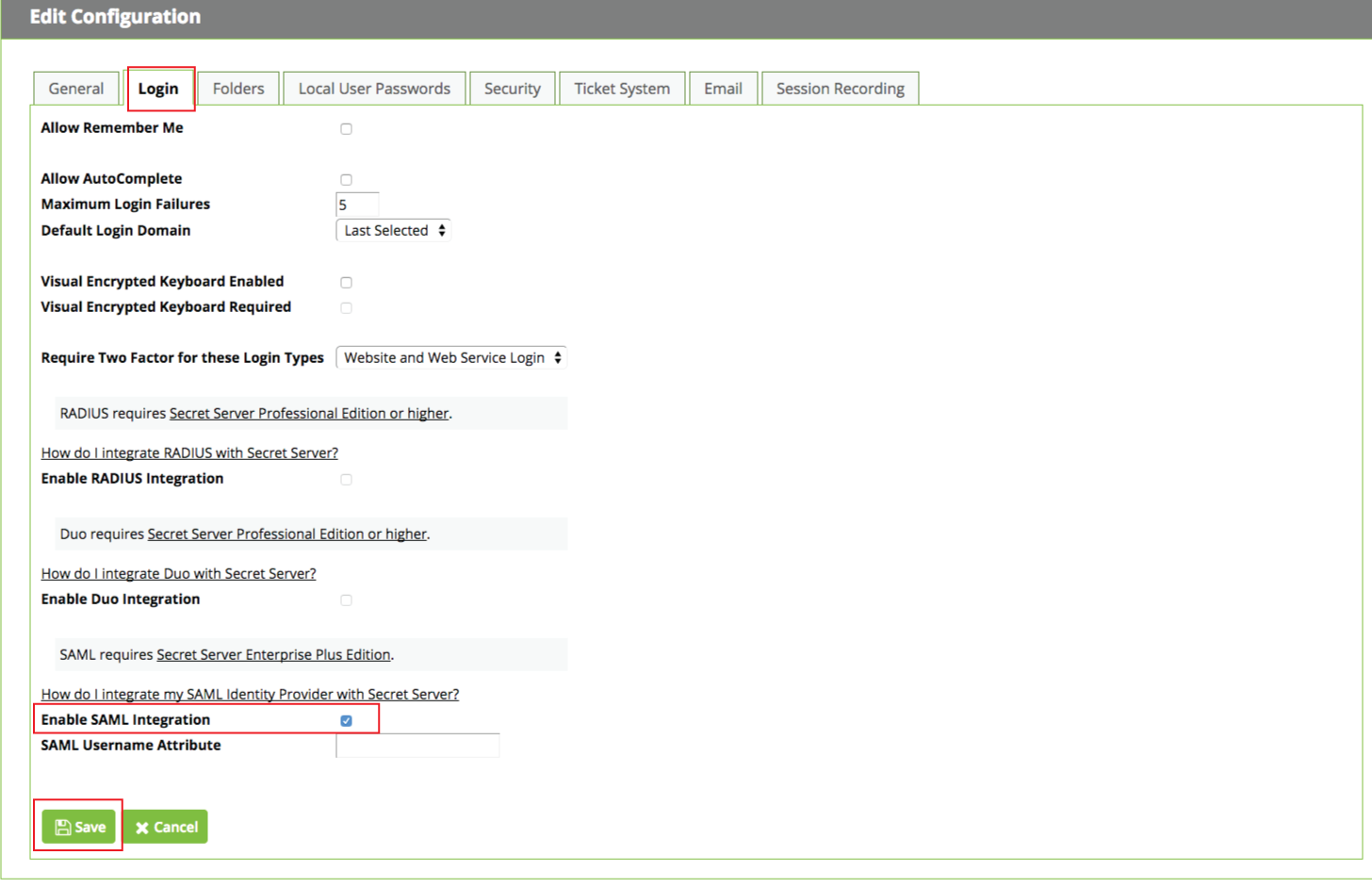 |
2. Select the Login menu option
3. Check Enable SAML Integration
4. Leave the SAML Username Attribute field blank
5. Click Save
saml.config
6. Go to the root of the Secret Server web server in the file system and place the exported Assertion Signing Certificate from the SecureAuth IdP Web Admin (step 18) here
7. Open the saml.config file
8. Use the following code to create the saml.config file
Replace the SecureAuthIdPFQDN values with the actual FQDN of the SecureAuth IdP appliance (two instances)
Replace the # values with the actual SecureAuth IdP Secret Server-integrated realm number (realm configured in SecureAuth IdP Configuration Steps) (two instances)
These values must match the WSFed/SAML Issuer value supplied in the SecureAuth IdP Web Admin (step 10)
saml.config
<?xml version="1.0"?>
<SAMLConfiguration xmlns="urn:componentspace:SAML:2.0:configuration">
<ServiceProvider Name="urn:componentspace:SecretServerServiceProvider"
AssertionConsumerServiceUrl="~/SAML/AssertionConsumerService.aspx"
CertificateFile="ExportedCertHere.crt" /> <!-- Replace with the name of certificate file -->
<!-- SecureAuth -->
<PartnerIdentityProvider Name="https://SecureAuthIdPFQDN/secureauth#/" <!-- Replace the # with the actual FQDN and Realm Number of the SecureAuth Realm that will be doing SAML to SecretServer -->
SignAuthnRequest="true"
WantSAMLResponseSigned="true"
WantAssertionSigned="true"
WantAssertionEncrypted="false"
UseEmbeddedCertificate="true"
SingleSignOnServiceUrl="https://SecureAuthIdPFQDN/secureauth#/" /> <!-- Replace the # with the actual FQDN and Realm Number of the SecureAuth Realm that will be doing SAML to SecretServer -->
</SAMLConfiguration>9. Save the saml.config file
Note
After changing the saml.config file, Secret Server's application pool must be recycled
Use iireset or right-click the application pool in the UI and Recycle it
